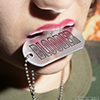Secondo voi quale dovrebbe essere l'equipaggiamento ideale per un cecchino???
Pensando a tutto, dal camuffamento, alle armi
Chiedo a voi per farmi un'idea... Ho letto quì in giro di vari fucili da cecchino, e molti mi son sembrati piuttosto dei "cannoni" non molto pratici per 1 persona sola...












